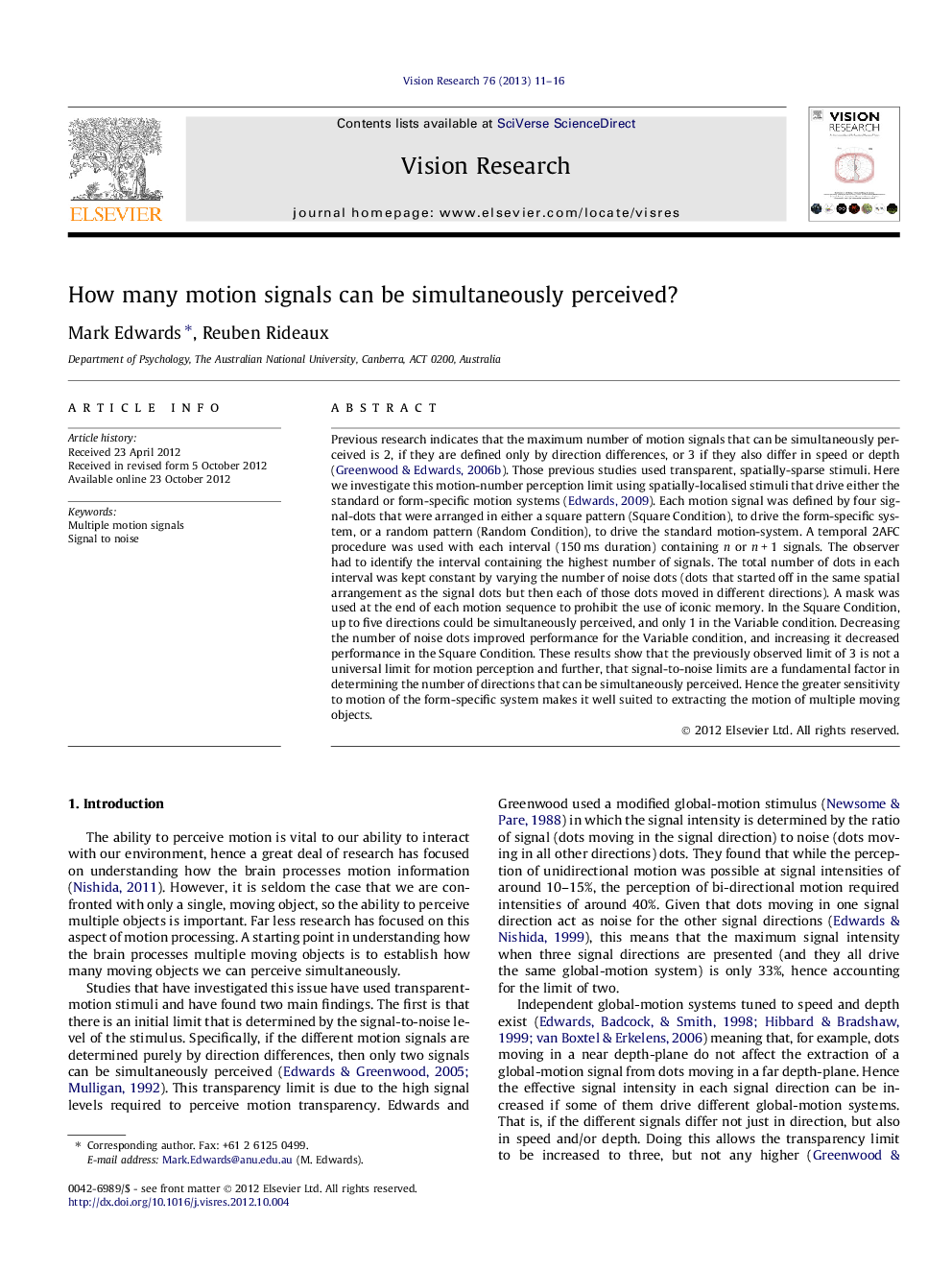| Article ID | Journal | Published Year | Pages | File Type |
|---|---|---|---|---|
| 6203625 | Vision Research | 2013 | 6 Pages |
Previous research indicates that the maximum number of motion signals that can be simultaneously perceived is 2, if they are defined only by direction differences, or 3 if they also differ in speed or depth (Greenwood & Edwards, 2006b). Those previous studies used transparent, spatially-sparse stimuli. Here we investigate this motion-number perception limit using spatially-localised stimuli that drive either the standard or form-specific motion systems (Edwards, 2009). Each motion signal was defined by four signal-dots that were arranged in either a square pattern (Square Condition), to drive the form-specific system, or a random pattern (Random Condition), to drive the standard motion-system. A temporal 2AFC procedure was used with each interval (150 ms duration) containing n or n + 1 signals. The observer had to identify the interval containing the highest number of signals. The total number of dots in each interval was kept constant by varying the number of noise dots (dots that started off in the same spatial arrangement as the signal dots but then each of those dots moved in different directions). A mask was used at the end of each motion sequence to prohibit the use of iconic memory. In the Square Condition, up to five directions could be simultaneously perceived, and only 1 in the Variable condition. Decreasing the number of noise dots improved performance for the Variable condition, and increasing it decreased performance in the Square Condition. These results show that the previously observed limit of 3 is not a universal limit for motion perception and further, that signal-to-noise limits are a fundamental factor in determining the number of directions that can be simultaneously perceived. Hence the greater sensitivity to motion of the form-specific system makes it well suited to extracting the motion of multiple moving objects.
⢠Can perceive more than three motion signals simultaneously. ⢠Possible to perceive more when the stimuli drive the form-specific system. ⢠Signal-to-noise levels limit performance.
